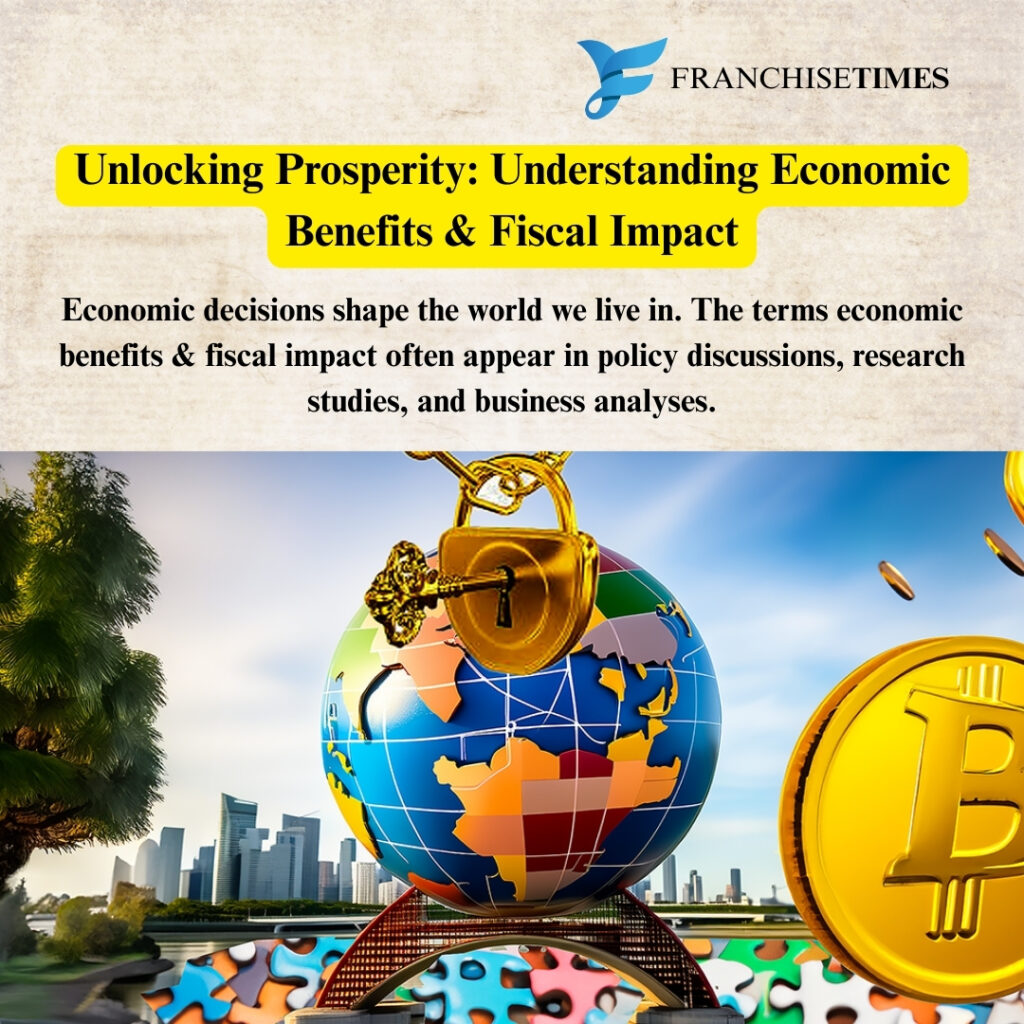Unlocking Prosperity: Understanding Economic Benefits & Fiscal Impact
Economic decisions shape the world we live in. Every policy, investment, and innovation carries ripple effects that influence national growth, household welfare, and long-term financial stability. The terms Economic Benefits and Impact often appear in policy discussions, research studies, and business analyses. However, to truly understand their significance, we need to break them down, examine how they interact, and explore their outcomes in both short-term and long-term contexts.

This article provides a deep dive into the concept of economic benefits and fiscal impact. It highlights how these factors affect governments, businesses, and individuals, while also discussing real-world examples. By the end, you’ll gain clarity on why analyzing economic benefits & fiscal impact is essential for sustainable development and decision-making.
1. Defining Economic Benefits & Fiscal Impact
Economic benefits refer to the positive outcomes derived from activities, policies, or investments that create value. These benefits can be direct—such as job creation or revenue generation—or indirect, such as improved health outcomes or increased innovation. For example, when a government invests in renewable energy, the immediate economic benefit may be employment opportunities, while the indirect benefit could be reduced healthcare costs due to cleaner air.
On the other hand, fiscal impact measures how such activities affect government budgets. It deals with taxation, expenditure, subsidies, and overall fiscal health. If a city builds a new highway, the fiscal impact includes the costs of construction, maintenance, and potential toll revenue. By analyzing fiscal impact, policymakers ensure that initiatives are financially sustainable and aligned with broader economic goals.
Both concepts are interconnected. Without considering economic benefits, a project might appear unnecessary. Similarly, ignoring fiscal impact could lead to financial strain despite potential long-term advantages. A balanced view helps in making smarter economic decisions that maximize public welfare.
2. The Interplay Between Economic Benefits & Fiscal Impact
The relationship between economic benefits and fiscal impact is dynamic. Economic growth boosts government revenues through taxation, while strong fiscal policies support investments that drive benefits. Let’s explore some practical examples:
- Infrastructure Projects: Building airports, roads, and railways often requires huge public spending. The fiscal impact may initially show high debt, but economic benefits such as trade growth and tourism can offset costs in the long run.
- Healthcare Spending: Increased government healthcare expenditure may strain the budget. Yet, healthier populations improve productivity, reduce absenteeism, and generate higher tax revenue.
- Education Investments: Funding schools and training centers requires large fiscal commitments. Over time, however, educated populations contribute significantly to GDP growth, creating a positive cycle of benefits and revenue generation.
Transitioning from short-term fiscal costs to long-term economic benefits requires patience and smart governance. Nations that balance these aspects usually experience sustainable prosperity.
3. Measuring Economic Benefits & Fiscal Impact
Quantifying economic benefits & fiscal impact is complex but essential for evidence-based decision-making. Policymakers, researchers, and businesses rely on specific tools and indicators:
Key Methods of Measurement:
- Cost-Benefit Analysis (CBA): Compares projected costs of a project against its expected economic returns.
- Input-Output Models: Tracks how spending in one sector stimulates activity in others.
- Fiscal Multipliers: Estimates how much GDP will rise when government spending increases.
- Tax Revenue Projections: Forecasts the effect of policies on government income.
- Social Return on Investment (SROI): Evaluates broader community benefits, including health, environment, and education.
Challenges in Measurement:
- Time Horizon Differences: Economic benefits may take decades to appear, while fiscal impacts are often immediate.
- Uncertainty of Outcomes: Natural disasters, global crises, or technological changes can alter expected results.
- Regional Disparities: What benefits one region may impose fiscal burdens on another.
Despite these challenges, effective measurement provides policymakers with the insights needed to balance economic growth with fiscal sustainability.
4. Real-World Examples of Economic Benefits & Fiscal Impact
To grasp these concepts better, let’s examine global and national examples where economic benefits & fiscal impact played a crucial role:
Renewable Energy Expansion
Countries investing in solar and wind energy often face high upfront fiscal costs. Yet, over time, they reduce dependency on imported fossil fuels, lower pollution-related healthcare costs, and create thousands of jobs. Germany’s “Energiewende” (energy transition) is a strong case where initial fiscal burdens translated into long-term economic resilience.
Large-Scale Sporting Events
Hosting events like the Olympics or FIFA World Cup generates enormous short-term spending. The fiscal impact includes massive infrastructure investment and security costs. However, the economic benefits can include tourism growth, international recognition, and increased foreign investments. Still, results vary—some countries profit, while others struggle with long-term debts.
Digital Transformation Policies
When governments fund IT infrastructure, they often incur fiscal pressure. Nevertheless, digital economies lead to higher productivity, better tax compliance through digitized systems, and enhanced global competitiveness. India’s “Digital India” program is a strong example, where fiscal investment opened doors for job creation and global IT partnerships.
Pandemic Relief Packages
During crises like COVID-19, fiscal impacts were immense due to subsidies, healthcare investments, and social welfare programs. Yet, these interventions prevented economic collapse, safeguarded livelihoods, and set the stage for recovery. The balance of fiscal strain and economic benefits determined how quickly nations bounced back.
These examples reveal that economic benefits & fiscal impact must be evaluated together to avoid misjudgments.
5. Future Outlook: Building Sustainable Prosperity
Looking ahead, the evaluation of economic benefits & fiscal impact will become even more critical. Globalization, climate change, and digital disruption are reshaping economies. To remain competitive and financially stable, nations must adopt innovative strategies:
- Green Investments: Transitioning to sustainable energy and eco-friendly infrastructure will generate long-term benefits despite short-term fiscal challenges.
- Smart Fiscal Policies: Progressive taxation, efficient subsidies, and targeted social spending will balance budgets while fueling growth.
- Public-Private Partnerships: Collaborations between governments and businesses can distribute fiscal responsibilities and accelerate benefits.
- Data-Driven Governance: Using advanced analytics to forecast benefits and fiscal impacts will improve policy accuracy.
- Global Cooperation: Cross-border initiatives in trade, technology, and climate will spread both benefits and fiscal responsibilities more evenly.
The real test lies in aligning fiscal responsibility with long-term economic vision. Leaders who prioritize both will ensure their countries thrive in a rapidly evolving world.
Conclusion
The concepts of Economic Benefits and Impact are more than academic terms—they are practical tools for shaping better futures. Economic benefits capture the value created by policies, investments, and innovations. Fiscal impact reflects how these initiatives affect government budgets. When examined together, they reveal the true picture of sustainability, growth, and prosperity.
From infrastructure projects to healthcare policies, every decision carries both immediate fiscal implications and far-reaching economic outcomes. Countries, businesses, and individuals must strike a balance between the two. By doing so, they unlock not just short-term gains but also long-lasting prosperity.
Ultimately, understanding and applying the principles of economic benefits & fiscal impact allows societies to grow responsibly while securing financial stability for generations to come.
